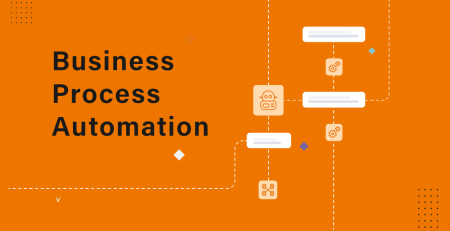What’s New in FinTech Software Industry
Financial institutions are using new technologies to make informed decisions about new services, marketing programs, investments, and a variety of other issues.
The financial software industry is expanding as financial institutions pursue digital transformation and introduce new features to their customers. Banks and other financial institutions are also demonstrating to customers that they are keeping up with the level of automation and convenience that those customers expect. Such features necessitate the use of software and the assistance of professionals to implement and maintain them.
Furthermore, the financial regulatory system requires banks to keep certain types of records, which necessitates the use of different types of software. Furthermore, as in many other industries, financial firms are leveraging new technologies to make informed decisions about new services, marketing programs, investments, and a variety of other issues. Another area where financial institutions require robust software is security. Customers must have confidence that their assets are secure.
In the sections that follow, we look at what’s new in financial software, including more information on the different types of software used in the industry and the technology that powers them.
Today’s Financial Industry
The banking sector, like many other industries, is under pressure to adopt emerging technologies in order to outperform competitors and provide the level of convenience and security that customers expect based on their relationships with firms in other sectors, such as retail. Customers are looking for ease, speed, personalization, and superior customer service based on that activity.
Another motivator is the desire to maximize efficiency and profit. Robotic process automation (RPA), artificial intelligence (AI), and machine learning (ML) are changing the demands placed on human workers by performing labor-intensive or repetitive tasks quickly, accurately, and efficiently, allowing humans to focus on higher-level functions.
Add another crucial factor to this list. The nature of money is changing as a result of technologies such as blockchain and cryptocurrency. Cryptocurrencies are no longer a niche interest, and banks are using blockchain to offer new services and reduce operating costs. The video below goes into greater detail about the likely future of money based on these and other innovations.
Given the impact of these emerging technologies, financial institutions must not only change their operations, but also the story they tell their customers about themselves, to a technology-first narrative. This shifts the perception of slow, stodgy organizations out of step with modern times to sleek, modern financial service powerhouses capable of assisting customers in achieving their financial and personal goals.
Software Used in Finance
Banks are adding new features to better serve existing customers and attract new ones. Top financial software companies are developing products that enable a variety of tasks to support those efforts. So, what software do the majority of banks use? Each company must develop its own unique mix, but there are some categories that many banks and other financial institutions use:
- Security software. Because they hold sensitive personal and financial information that cyber criminals value, financial institutions are victims of cybercrime at a much higher rate than other types of companies. Sensitive customer data is at risk of being exposed. And, as these attacks are incredibly costly in terms of money, time, and tarnished reputation, companies must continue to use robust applications to combat them.
- Online and mobile platforms. Depending on your age, you may remember when online and mobile banking didn’t exist, and all transactions required an in-person visit to the bank. Now it’s hard to imagine a financial institution that doesn’t enable performing most, if not all, transactions online.
Some companies in this sector don’t even have a physical location and require all transactions to be done electronically. The differentiator at this point is not whether a bank has online and mobile banking but how easy the interfaces are to use.
Given the ubiquity of mobile phones and laptop or desktop internet use, the more electronic options financial institutions can give customers, the better. They include the abilities to deposit and withdraw funds, check balances, move money from one account to another, analyze spending, and more. - Automated investment tools. Customers used to go in person to meet with their financial advisers. Now it is not uncommon to meet with them via video or phone conferences, which must be secure. Additionally, information sent in writing must use a secure portal to exchange messages back and forth.
Banks are even offering automated suggestions and investment advice based on predictive analytics to augment or replace human investment advisers. While many people still prefer a human-to-human relationship for investment advice, others are willing to trust automated investment insights that help them manage their money. - Chatbots. The time has passed when computer interfaces were so frustrating that customers almost always chose the “talk to a real person” option when faced with a bot on the other end of a phone line. Now these programs are much more sophisticated and less challenging to navigate. Therefore, companies can feel confident in using them more freely without losing customers’ good will as a result.
- Analysis tools. Big data, AI, and ML give financial institutions nearly endless options in terms of helping customers, increasing efficiency, finding and keeping customers, and making smart operational decisions.
- CRM systems. Banks and other companies in the financial industry know how important relationships with customers are. Therefore, software designed to manage those relationships is critical.
- Document management software. In addition to the many applications needed to enable customers to perform transactions, additional software is a must for companies to handle business internally. Such software includes document management systems to perform tasks like financial planning, accounting, and preparation of financial statements.
The Role of Financial Software Development Companies
Financial software development firms today bear enormous responsibility because their products support critical financial activity and foster trust between institutions and their customers. Software development firms must create products that not only perform as expected in terms of efficiency and effectiveness, but also provide a high level of security, a simple user interface, and the ability to grow as their customers—financial institutions—succeed.













Leave a Reply